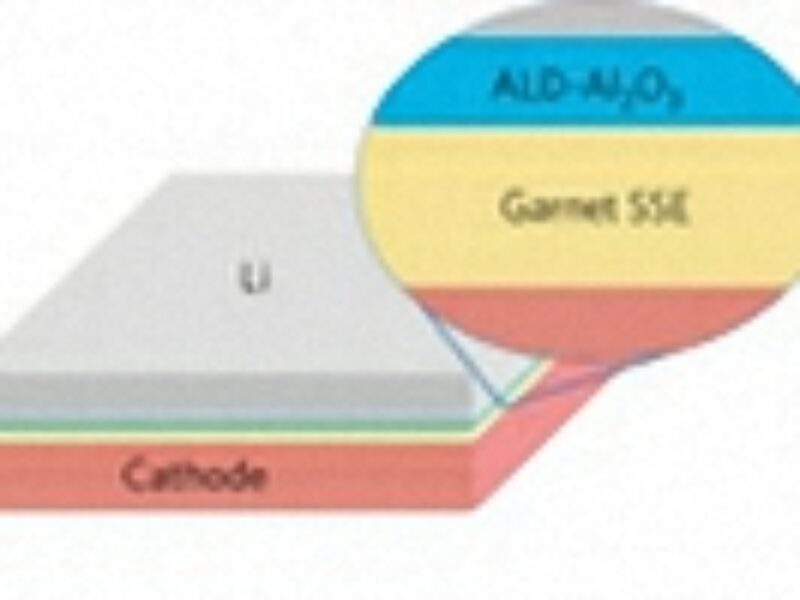
Researchers make garnet solid state batteries a reality
Garnet-type solid-state electrolytes have attracted extensive attention due to their high ionic conductivity, approaching 1 mS/cm, environmental stability and wide electrochemical stability window, from lithium metal to ~6 V, and as a result are a key technology for ‘battery on a chip’ applications. However, up until now there had been little success in developing high-performance, garnet-based solid-state batteries as the high impedance between the garnet electrolyte and electrode materials limited the flow of energy or current, dramatically decreasing the battery’s ability to charge and discharge.
The University of Maryland team has solved the problem of high impedance between the garnet electrolyte and electrode materials with the layer of ultrathin aluminum oxide, which decreases the impedance 300 fold. This virtually eliminates the barrier to electricity flow within the battery, allowing for efficient charging and discharging of the stored energy.
“This is a revolutionary advancement in the field of solid-state batteries–particularly in light of recent battery fires, from Boeing 787s to hoverboards to Samsung smartphones,” said Liangbing Hu, associate professor of materials science and engineering. “Our garnet-based solid-state battery solves the typical problems that trouble existing lithium-ion batteries: safety, performance, and cost.”
Using atomic layer deposition (ALD) to add the ultra-thin layer of oxide decreased the impedance from 1,710 Ω cm2 to 1 Ω cm2 at room temperature, effectively negating the lithium metal/garnet interfacial impedance, allowing the team to build a working cell with a lithium metal anode, garnet electrolyte and a high-voltage cathode.
Lithium-ion batteries typically contain a liquid organic electrolyte that can catch fire. This risk is eliminated by the UMD team’s use of the non-flammable garnet-based solid-state electrolyte.
“The work by [the University of Maryland research team] effectively solves the lithium metal-solid electrolyte interface resistance problem, which has been a major barrier to the development of a robust solid-state battery technology,” said Bruce Dunn, UCLA materials science and engineering professor. Dunn, a leading expert in energy storage materials, was not involved in this research.
In addition, the high stability of these garnet electrolytes enable the team to use metallic lithium anodes, which contain the greatest possible theoretical energy density. Combined with high-capacity sulfur cathodes, this all solid-state battery technology offers a potentially unmatched energy density.
“This technology is on the verge of changing the landscape of energy storage. The broad deployment of batteries is critical to increase the flexibility of how and when energy is used, and these solid-state batteries will both increase the safety and decrease size, weight, and cost of batteries,” said Eric Wachsman, professor and director of the University of Maryland Energy Research Centre.
Related stories:
- WORLD’S LARGEST CRYSTAL DATABASE TO HELP BATTERY DESIGNERS
- AI TARGETS 21 NEW SOLID ELECTROLYTES FOR LESS FLAMMABLE BATTERIES
- MATERIALS DATABASE LEADS TO BATTERY TECHNOLOGIES BEYOND LITHIUM
- CAN GARNET CERAMICS UNLEASH HIGH-ENERGY LITHIUM BATTERIES?
 If you enjoyed this article, you will like the following ones: don't miss them by subscribing to :
eeNews on Google News
If you enjoyed this article, you will like the following ones: don't miss them by subscribing to :
eeNews on Google News




